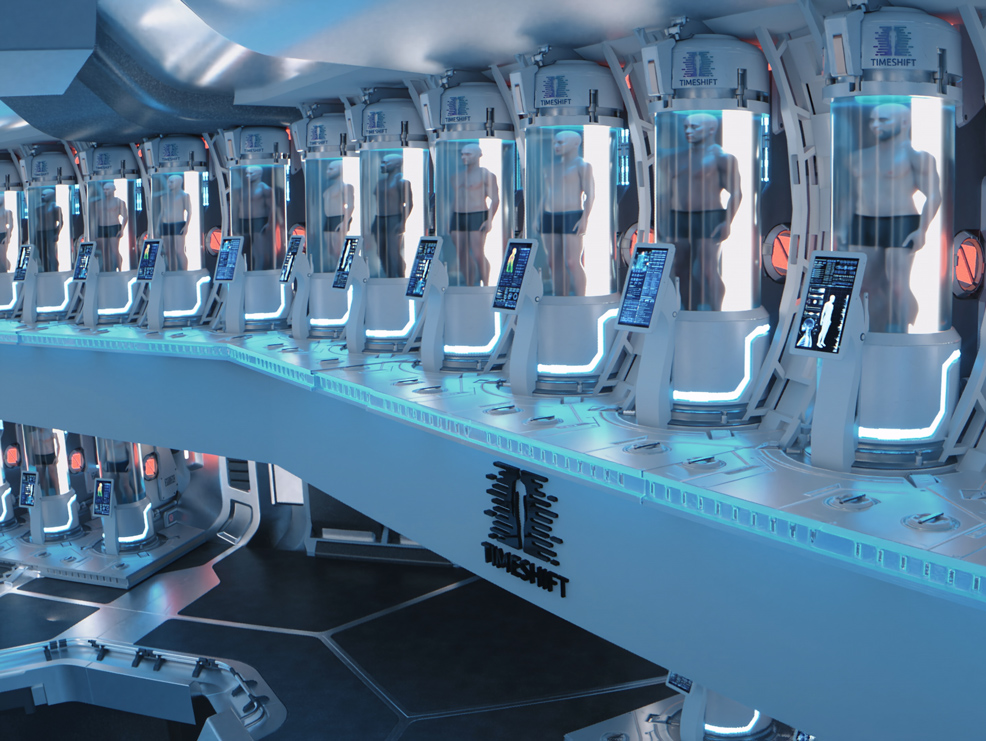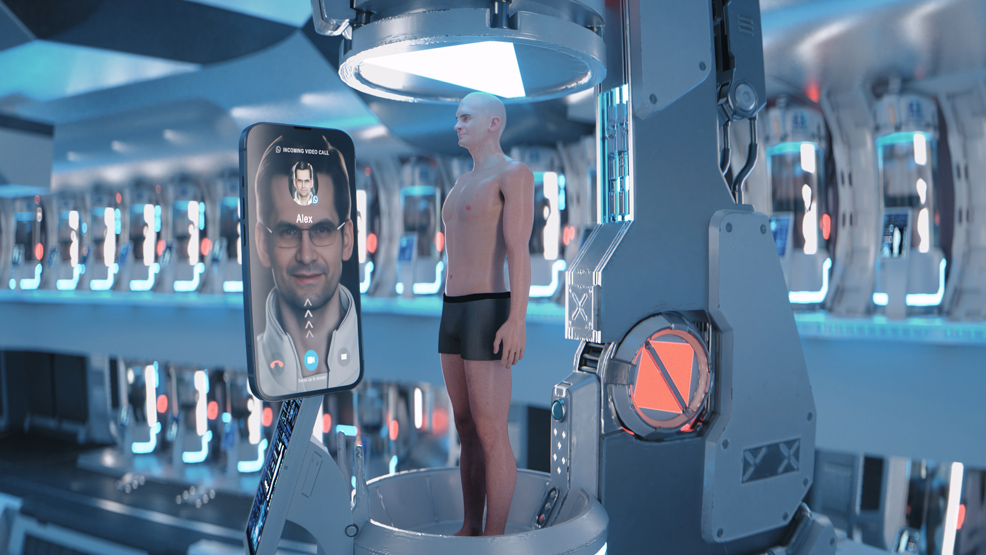
18th January 2025 What might a future cryopreservation facility look like? In our latest featured video, we look at TimeShift, a concept for the world's first cryopreservation facility designed to extend human lifespans while preserving biological integrity.
The futuristic vision seen here is presented by Dr. Alex Zhavoronkov, a generative AI scientist and anti-aging researcher, and Hashem Al-Ghaili, a molecular biologist and science communicator. The facility they have designed, if ever realised, would employ state-of-the-art methods to slow or halt the progression of neurodegenerative diseases and aggressive cancers, providing precious time for medical advancements. Going beyond preservation, pre-hibernation enhancements such as longevity treatments and gene therapy might be possible, ensuring individuals awaken healthier and better equipped for the future. "Over the past 10 years, multiple technologies have advanced in different laboratories around the world, and it is now a matter of multi-parameter optimisation for rapid cryogenic freezing and rewarming protocol," said Dr. Zhavoronkov. "Getting to the dream of gaining the ability to see more life is now a matter of time." TimeShift, as their platform is called, also integrates advanced AI solutions, such as a "CryoMemory Vault" and life-like AI avatars, allowing individuals to maintain connections with loved ones during their cryostasis.
"By combining AI and cryopreservation, we're making it possible for families to remain close, even across decades," explained Hashem Al-Ghaili. "TimeShift utilises a groundbreaking process for freezing the human body and biological tissues, overcoming the limitations of traditional cryopreservation methods that rely on outdated technologies. Conventional procedures are typically performed after death. However, TimeShift's advanced protocol is designed to preserve living individuals – such as cancer patients – using a carefully structured, multi-step suspended animation process." Beyond preserving individuals, TimeShift could transform industries by enabling better organ preservation, safeguarding biodiversity, and ensuring humanity's continuity during disasters. "This new ability will impact every industry – from biomedicine to finance – and will become one of the key elements of next-generation real estate projects dedicated to the advancement of longevity biotechnology," said Dr. Zhavoronkov. "This innovation offers a new frontier in life extension and addresses the growing demand for cryopreservation, particularly among patients seeking to overcome terminal conditions with future medical advancements," added Hashem Al-Ghaili. "TimeShift provides not just an opportunity to extend life but also the chance to awaken and experience the extraordinary technologies of tomorrow." While the concept may seem far-fetched at this stage, recent breakthroughs in cryonics and cryobiology suggest that such innovations could become a reality sooner than many expect. Over the last two decades, researchers have developed highly effective vitrification solutions, such as M22, which minimise the damage from ice crystal formation in organs, as well as "nanowarming" techniques using nanoparticles to safely and uniformly rewarm large tissues. NASA has even begun investigating "torpor" states for astronauts on long-duration space missions. Considering this progress, TimeShift offers a glimpse of a future that now seems increasingly plausible, in which suspended animation and life extension could transform medicine, enabling us to overcome once-fatal conditions and reconnect across generations. The developers plan to test their device on animal models, and they anticipate a functional prototype within five to eight years.
If you enjoyed this article, please consider sharing it:
|








